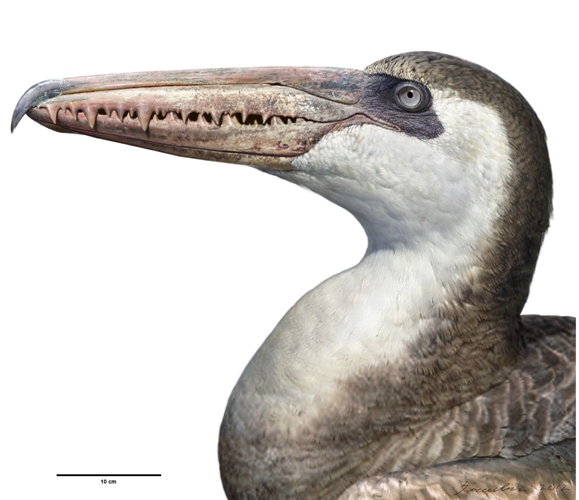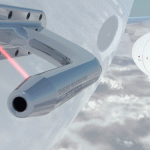
Artist rendition of Australian pelagornis in flight. Image: Peter Trusler/ Museum Victoria
Huge bony-toothed birds soared in the sky over Australia five million years ago, fossil evidence shows.
Pelagornis was a large prehistoric bird with a serrated bony beak that ruled the skies during the Miocene. A research team led by Dr Erich Fitzgerald from Museum Victoria has found the first fossil evidence that these flying monsters existed in Australia. Their finding, published in the Journal of Vertebrate Palaeontology, sheds light on the evolution of Australian seabirds.
The Pelagornis leg bone fossil was found in Beaumaris Bay, Victoria. The scientists said that the bone belonged to the same species that has previously been found in France, Morocco and Chile.
With a wingspan of more than five metres (that’s around the height of a giraffe), these gargantuan creatures were once the largest to soar in the sky after the extinction of Pterosaurs 65 million years ago.
It is not known what caused the demise of this giant, although Fitzgerald and his team suggested that long-term changes in the environment, such as the seas becoming less nutrient-rich, may have caused the extinction of many of the ancient megafauna that once roamed the Australian coastline.
“Pelagornis is just one of Victoria’s long-lost marine megafauna, which included bus-sized sharks, giant penguins, killer sperm whales and dugongs. Life was larger back then!” said Fitzgerald, senior curator of vertebrate palaeontology at Museum Victoria, in a statement.

The Australian pelagornis is similar to Pelagornis chilensis. Image: Museum Victoria
Not much is known about the evolution of seabirds in Australia, so this discovery has had a great impact on the field as it sheds-a-light into its evolvement. It is still hotly debated whether Pelagornis was an ancestor, or related to, any seabirds living today.
“Although they [Pelagornis] have some characteristics that suggest relation to pelicans, other features hint at affinities to albatrosses,” said Fitzgerald.
The team worked with artist Peter Trusler to reconstruct the appearance of Pelagornis.
Source: Journal of Vertebrate Palaeontology






